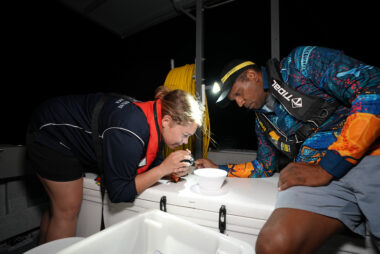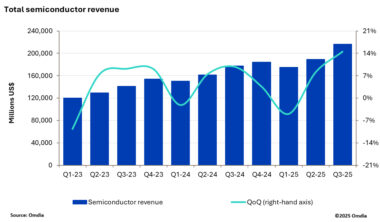
Detailed livestock models are important for land-use planning, disaster relief and food insecurity.
Researchers have used dung records to create high-resolution maps of herbivore distribution around the world. Their new study, recently published in Nature Food, reveals a strong positive relationship between dung presence and grazing pressure, meaning the amount of dung found in a particular location could help us understand approximately how many herbivores live there.
Many people consider dung simply as the manure left behind by horses and cows at country shows, or something to be avoided when you visit the cousins’ farm. But dung is actually an important resource for millions of people worldwide.
Dung also acts a biological footprint – it can tell us a lot about our environment, such as what animals are grazing where, and what this might mean for environmental health.
Now, scientists from Australia, Spain, China and Saudi Arabia, led by Professor David Eldridge from UNSW Sydney, have produced the first global assessment of dung produced by livestock and native grazing animals in drylands – arid and semi-arid environments that occupy about 40% of the world’s land area.
The research revealed hotspots of dung production, but also highlighted that broadly speaking, livestock and wild herbivores – animals like horses, cows and kangaroos that only eat vegetation – don’t occupy the same spaces on earth.
“Understanding where herbivores are distributed is important for a number of reasons,” says Prof. Eldridge. “It helps us to improve our understanding of the grazing industry, like the spread of bovine diseases. If we have a better understanding of where animals are, we've got a better understanding of where we might need to target particular land management practices.”
Estimating livestock density
Current assessments of livestock density are based on crude estimates of environmental variables such as mean annual rainfall, temperature, and some soil variables. These environmental variables are broad indicators of habitats that are likely to be occupied by herbivores, because more productive systems generally have more grass and therefore support more herbivores.
International organisations such as the United Nations Food and Agriculture Organisation (FAO) need to know where livestock are concentrated, and in what numbers. To do this they use relatively coarse computer models.
Improving these existing methods of predicting herbivore distribution is central to a number of agricultural industries. So, Prof. Eldridge and his team set out to solve some of these challenges with a somewhat unusual solution.
Dung – a byproduct of meat production, a source of nitrogen and phosphorus fertiliser – is used in building construction, and as a fuel for cooking by millions of people around the world. “Measuring and mapping dung could be a useful resource to help these organisations fine tune coarse predictions of animal distribution,” says Prof. Eldridge.
Methods & findings
The research team assembled 50 global datasets that included the mass of dung produced and measures of grazing pressure by different herbivores, including antelopes, sheep, and kangaroos.
Their analysis showed that all but one of these datasets showed strong positive relationships between dung production and grazing pressure.
“These data show a strong positive correlation, or positive relationship, between the amount of dung produced and animal grazing pressure,” says Prof. Eldridge. “If we know how much dung there is, then we can predict where the animals are distributed.”
The team also combined livestock and wild herbivore dung mass data from surveys at 760 dryland sites worldwide, representing independent measurements of herbivory, to generate high-resolution maps.
“The surprising thing that we found is that when you model where native herbivores are and where livestock are, there's some overlap, but in general, there are a lot of areas where they don't interact,” says Prof. Eldridge. “This could be due to direct competition for resources or avoidance by wild herbivores of potential livestock-borne parasites and diseases.”
The researchers located hotspots of dung production in central Africa, northern and eastern Australia, the Eurasian grasslands, east central India, and the west coast of the United States of America. Dung production was shown to be lower in north-central Africa and west-central China.
Dung as a scientific tool
Global assessment of livestock distribution is critically important for land use planning, for estimating gross methane emissions, predicting global meat production, or predicting where livestock may be at risk from pests and diseases such as brucellosis.
It also improves the ability of organisations to predict trends in global food production and the impacts of drought and natural disasters on food security.
Counting dung can often be easier and more efficient than counting animals, Prof. Eldridge explains.
“For example, one paper shows how dung counts often give us a better estimate of elephant densities than aerial surveys of the animals themselves. Dung counts are also efficient ways of studying habitat preference of elusive herbivores that are hard to detect or occur in very low numbers,” he says.
But dung can also help researchers at more local scales. “Knowing the location of dung in different paddocks can tell us about the habitat preference of different herbivores and how they interact. This could provide farmers with better information on where to place fences, watering points and other infrastructure to improve livestock production,” says Prof. Eldridge.
Assessments of dung are not without their complexities, Prof. Eldridge explains. “Many farmers in Asia and Africa collect dung, reducing the potential field assessment and therefore potentially underestimating the amount of dung produced by animals.”
Some animals such as deer bury their dung, and in many tropical countries, dung beetles and termites break this dung down in just a few days, making regional assessments more difficult.
“These and other issues make it difficult to come up with robust assessments of animal densities,” says Prof. Eldridge. “However, even when we accounted for areas where people collected dung, there was still strong relationships with grazing pressure.”
Despite the challenges, this research provides a world-first, comprehensive global map of the dung of livestock and wild herbivores in drylands, and paves the way for organisations to incorporate dung data into livestock maps and models.
Contact details:
For enquiries about this story please contact Lilly Matson.
Tel: 0426 656 007
Email: [email protected]



